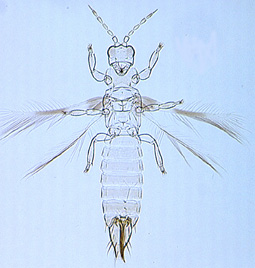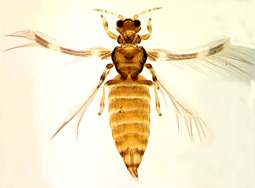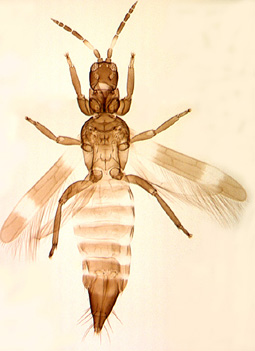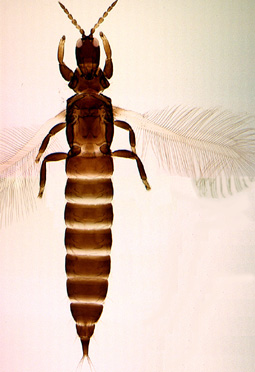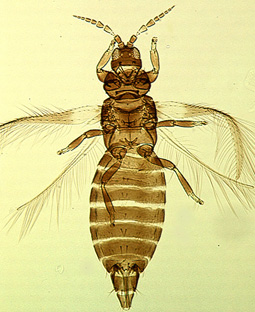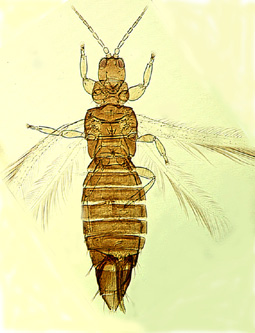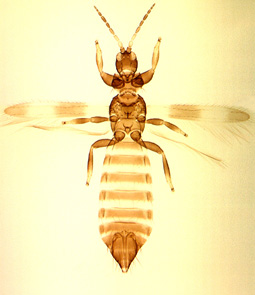Mounting
To facilitate this process it is best first to prepare
a small mounting block. This is done by fixing to the centre of
a microscope slide a 2mm deep layer of 1 inch square white card.
Mark the centre of this with crossed lines, and then cover it securely
with plastic tape to provide a clean, shiny surface.
11. Place a clean 13 mm diameter circular cover slip onto the mounting
block; put a drop of Canada Balsam onto the centre of the cover
slip and into this place one thrips specimen ventral side uppermost.
12. Spread the legs and wings, and straighten the antennae by pressing
on the basal segments with a fine needle.
13. Invert a clean microscope slide and lower it firmly but gently
onto the specimen in balsam on the cover slip. As soon as the surfaces
touch, re-invert the slide with the coverslip adhering; this technique
usually avoids the inadvertent introduction of bubbles. Sometimes
it helps to place a small drop of balsam in the centre of the slide
before touching the balsam of the cover slip.
14. Place the slide onto a hot-plate at once, at about 45°C,
to drive off the xylene as quickly as possible. Then dry the slides
until they are hard in an oven at about 45°C for several weeks.
The quantity of balsam must be sufficient - after it has dried -
to support the coverslip without distorting the specimen.
Labelling
1. With the head of the thrips directed toward you,
the right hand label should indicate the host plant, followed by
the country (in capital letters) and then the locality and date,
with collector's name (and code number).
2. The left hand label should indicate the sex, morph, genus and
species, with sufficient room left for any special notes to be added
about that particular specimen e.g. measurements, number of wing
setae etc.
Next page
